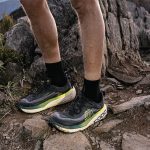Has a customer ever arrived at your door with a tent fly melted from flying too close to a hot stove? Or complained about a broken zipper on a sleeping bag that left them freezing on a cold night in the mountains? What about the hiker who pleads with you to repair a ten year old pair of heavy leather hiking boots that carried him from one end of the Appalachian Trail to another?
Despite constantly evolving fabrics, improved construction methods and advanced designs, stuff still rips, tears, and breaks. Customers have a clear set of choices to deal with problem. The decision is either/or: replace it or throw it away. An often-overlooked third option is to get the damage repaired by a professional service.
“Theres very little out there that we cant repair,” offered Bob Upton of Rainy Pass Repair in Seattle, Washington. Business is booming. At the end of 2005, the company moved into a new 3,000 square foot facility. “When I started the business we became a Gore authorized repair center right away. My reasoning was Gore-Tex jackets were more expensive than everything else and worth repairing,” explained Upton.
Phyllis Grimm started Stitchlines in 1985 after friends convinced her there was an open market ready for her sewing talents. “I did some market research and found only one other person doing repairs. Theres enough for both of us,” Grimm recalled. Business grew by word of mouth. Grimm repaired sleeping bags, backpacks; anything that needed stitching, sewing, or mending.
David Page Cobbler opened 37 years ago, in 1969. Today, its a small factory with a small, but very experienced crew on hand. “Were the worlds largest repair facility for hiking and mountaineering boots,” offered Page.
Rainy Pass, Stitchlines, and Dave Page Cobbler have established strong reputations across the country. Business comes from manufacturers, retailer partners, and individual consumers whove spent some time tracking them down.
“We deal with consumers one to one. But our customers also include retailers and manufacturers. They set up parameters for warranties and the customer service side. For our manufacturing accounts, our staff first identifies whether the repair is customer caused damage or a defect. If a defect surfaces more than once or twice we notify the manufacturer that there may be some kind of manufacturing issue going on,” explained Upton.
Over the years, Rainy Pass has created strong partnerships with retailers across the country. “When consumers have a problem they return it to the retailer. Our function is to provide a service to help them serve their customers. Sometimes its repair services, other times alterations,” he said.
Upton offers customer service options to retailers. “They can ask their customers to call us and we will deal with them directly. They dont want to handle it. Other stores will set up an account with us. The store will accept the repair from the customer and ship it to us. Well return it to the store so the customer has to come in once more to get it,” he said.
Dave Page Cobbler handles repair and warranty work for every hiking boot company in the United States. “Most people take boots to the store, the store will call the manufacturer and the repairs will get sent to us. If you have an 8-year old pair of Vasque hiking boots and you bring them back to the store or call Vasque, they will end up here,” explained Page. Accounts with REI, EMS, Adventure 16, Summit Hut, Active Endeavors, and Midwest Mountaineering bring in a steady stream of repairs.
Instead of sending repairs away, Midwest Mountaineering sends its customers upstairs to Thrifty Outfitters. Thrifty doesnt repair shoes, but handles a steady flow of ripped packs, sputtering stoves and broken sleeping bag zippers. “The business has grown slowly over the years. Theres not many people offering these services any more,” explained Steve Anderson. To increase the visibility of the repair services, Anderson is moving part of the shop to the retail floor.
Customers are charged fees based on the complexity of the repair and the time required. “Our price list is 14 pages long and is built on an hourly structure. Its set up based on the complexity of the repair. Prices move with the design details of the garment,” explained Upton.
Grimm provides customers with estimates when they bring the repair in. “I know how long a certain repair should take and thats what Ill charge them. If it takes longer, oh well, Ill swallow it. There are times when I dont charge enough. It can become more involved,” she said.
Grimm sees repairs caused by flawed designs as well as consumer neglect. “People handle equipment differently. Companies may use the same materials and hardware, the differences come down to design,” she said. Fixing backpack straps illustrates both sides of the issue. “People send me a backpack in with a torn right hand strap. Owners are using the strap to lift a full 60 lb pack instead of the grab loop. That strap is going to give,” she explained. Grimm added, “You buy something for $300-400 you expect that it will hold like its cement. Use the grab loop, thats why its there. Some of it is end user.”
Returning the gear to its original condition is the objective of all the services presented here. Given the rough treatment outdoor gear receives, its not always that easy. “We always try to make it look, work, and function exactly the way it comes to us. Most products use YYK zippers. We have a wall six feet high, twelve feet long, filled with 8″ bins filled with zipper parts. Thats how many YYK changes and tweaks there have been,” described Upton. Manufacturers supply Rainy Pass with logo parts as well as fabric swatches to support the factory finish objective.
Dave Page Cobbler stocks over 80 differnet models of Vibram. “Boots get repaired with what was on them originally. If it was a generic sole, you dont get a lesser product. We bring in shipping containers filled with soles,” Page said.
Grimms customers are active, professional, educated, and with enough disposable income to buy good gear. Like Grimm, they are also baby boomers.
“Our generation wants to keep things. We dont want to waste anything. Well keep things until there is nothing left,” Grimm said. She sees a different mentality today. “A generation later its definitely a throwaway society.”
The decision to repair gear isnt always motivated by saving money. “Sometimes people have an emotional attachment. Weve seen packs 15 years old that may not be worth what they will spend to fix them, but we do,” Anderson said.
“I have noticed that consumers are making decisions on green values rather than money values. They say, I can afford to replace this jacket, but it seems silly to throw it away for just for a $16 slider repair,” commented Upton.
Grimm also sees a sense of comfort and loyalty. “People are comfortable with gear they know versus new gear that may over promise benefits.”
As long as people head outdoors, Rainy Pass, Stitchlines, Dave Page Cobbler, and Thrifty Outfitters will keep their gear ready for the next trip.















